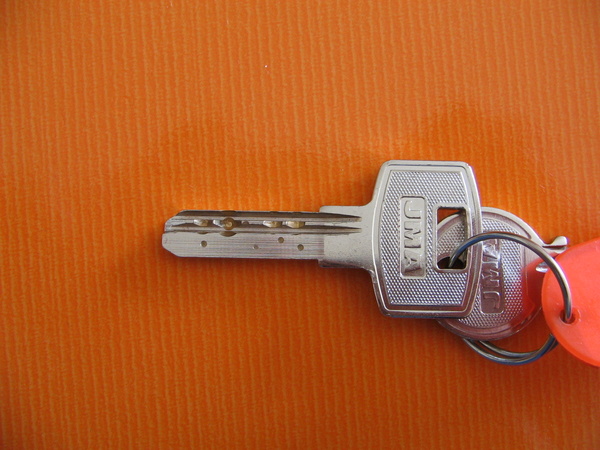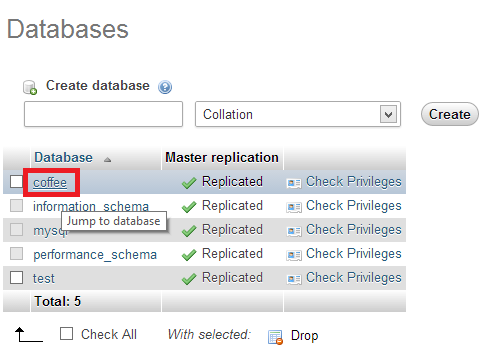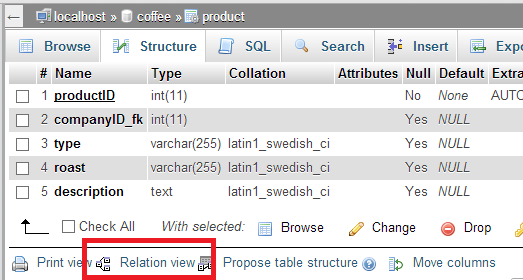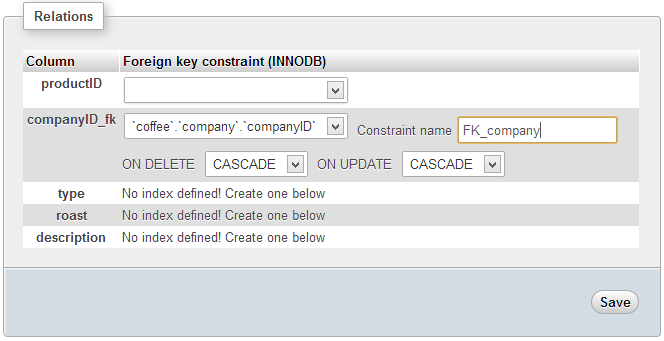
Intro to PHP and MySQL
Class 4
Welcome!
Girl Develop It is here to provide affordable and accessible programs to learn software through mentorship and hands-on instruction.
Some "rules"
- We are here for you!
- Every question is important.
- Help each other.
- Have fun.
Remember, we want d.r.y. code

Photo credit: Phil Synder cc
Application structure
Some parts of your code are repeated over and over. We can move these into their own files and use include to call them.
- header.php
- sidebar.php
- footer.php
Styling
Let's improve our coffeeshop page with some styles. Download the starter files as a .zip.

Thanks to Amy Hendrix for the code.
Let's Develop It
Play with the site code.
- Change the page title
- Add a link to the sidebar
- Add your name to the footer
Database relationships

Each table row has a unique primary key

Photo credit: Brenda-Starr cc
Tables are linked together through their keys

The link is called a foreign key

MySQL can automatically clean up related data

Let's Develop It
Let's edit first database. Start up WAMP/MAMP and go to http://localhost/phpmyadmin/ (Windows) or http://localhost:8888/phpmyadmin/ (Mac)
The default username is "root". The default password is either "" (i.e., leave it blank) or "root".
Select the coffee database

USE coffee;
Delete the product table

DROP TABLE product;
Use SQL to recreate the product table

CREATE TABLE product (
productID int NOT NULL AUTO_INCREMENT,
companyID_fk int,
type varchar(255),
roast varchar(255),
description text,
PRIMARY KEY (productID)
);
Use SQL to create a company table

CREATE TABLE company (
companyID int NOT NULL AUTO_INCREMENT,
name varchar(255),
phoneNumber varchar(255),
PRIMARY KEY (companyID)
);
Create an index on companyID_fk

ALTER TABLE product ADD INDEX (companyID_fk) ;
Open the product table and select relation view

Add a relationship

ALTER TABLE product
ADD CONSTRAINT FK_company FOREIGN KEY (companyID_fk)
REFERENCES company (companyID)
ON DELETE CASCADE ON UPDATE CASCADE;
Add some sample data

INSERT INTO company SET name='Starbucks', phoneNumber='(800)555-7282';
INSERT INTO company SET name='Bean Traders', phoneNumber='(919)555-5895';
INSERT INTO company SET name='Mean Beans', phoneNumber='(303)555-8475';
INSERT INTO product SET companyID_fk=1, type='French Vanilla', roast='dark', description='Strong coffee flavor with a hint of vanilla';
INSERT INTO product SET companyID_fk=1, type='Pumpkin spice', roast='medium', description='Seasonal';
INSERT INTO product SET companyID_fk=2, type='Dip Into Decaf', roast='light', description='You will barely notice it\'s coffee!';
Updating our submission forms
Right now, our product entry form is a free text entry. It looks like this:
Company: <input type="text" name="company"/><br/>
Restricting choices
We want it to only show approved companies from our DB, so looks like this:
Company: <select name="company">
<option value="2">Bean Traders</option>
<option value="3">Mean Beans</option>
<option value="1">Starbucks</option>
</select>
Let's Develop It
Your sample code has a file called add-products.php. It is almost complete. Add code to the commented sections to get it to work.
Passing information

Photo credit: Mykl Roventine cc
URL parameters
Up until now, we have only passed data via forms. We can also pass data in the URL itself. This is called a parameter.
http://www.website.com/file.php?parameter=value
Using parameters
You can retrieve a parameter's value and store it as a variable
http://www.website.com/file.php?parameter=value
$variableName = htmlspecialchars($_GET["parameter"]);
Let's Develop It
Your sample code has a file called delete-products.php. It is almost complete. Add code to the commented sections to get it to work.
Putting it all together

Editing data
Let's combine queries, forms, parameters, and logic all into one. We will
- Pass a product ID to a page using parameters
- Save that parameter as a variable
- Use a query to pull the associated data
- Pre-load that data into a form
- Send the form to processing script
- Update the database.
Let's Develop It
Your sample code has a file called edit-products.php and one called product_edit_result.php. They are almost complete. Add code to the commented sections to get it to work.
You did it!

Resources
- PHP Manual, the official PHP documentation. Check the comments; they are useful.
- Code Academy, with interactive PHP lessons to help you review.
- W3Schools SQL Tutorial, a great guide to basic SQL.
- OverAPI, a collection of quick-reference guides.
- The completed site code for today's exercises.